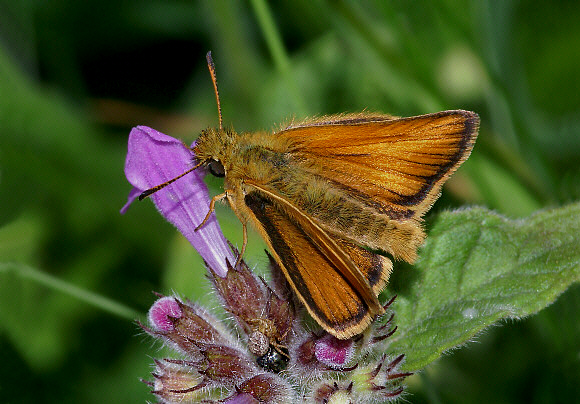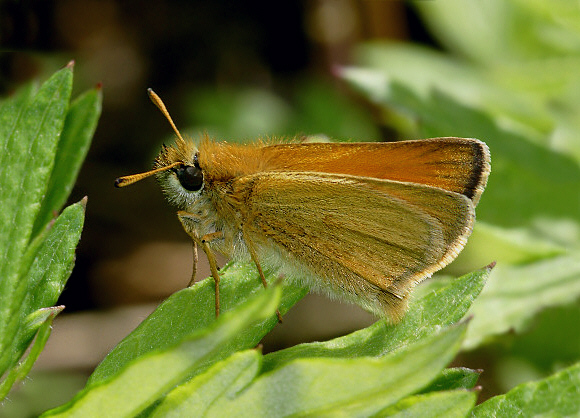
Introduction
In the Americas there are 2365 known species of Hesperiidae. These are split into 5 subfamilies i.e. Pyrrhopyginae, Heteropterinae, Megathyminae, Pyrginae and Hesperiinae. The Hesperiines of which there are about 1040 species, are known as Grass Skippers because their larvae feed on grasses, bamboos and other monocotyledons.
There are 11 species in the genus Thymelicus. One species is endemic to north Africa, 7 are native to temperate Asia, and 2 are found in both Europe and north Africa. The remaining species lineola is native to Europe, temperate Asia and the Mediterranean coast of north Africa, but was accidentally introduced to Canada in 1910. It showed a remarkable ability to colonise, and within a few decades had spread across much of North America. It is believed that the major cause of this expansion was the transportation of lineola eggs in hay bales – in one study over 5000 eggs were found in a single bale. Thymelicus lineola is now common across the eastern half of the USA, and has formed small colonies as far west as Washington.

Habitats
This species is found in rough grassy habitats including dry meadows, woodland clearings, coastal dunes, roadsides and railway embankments.

Lifecycle
The eggs are lozenge-shaped and milky white in colour. They are laid in strings of 3 or 4, inserted into the flower sheaths of various grasses, primarily Phleum ( Poaceae ).The eggs are laid in July, and by early August the tiny larvae are fully developed, but do not hatch until the following spring.
The larva lives within a shelter made by rolling a blade of grass into a tube, which is held together with strands of silk. It hides within the tube during the daytime, and feeds at dusk, although fully grown caterpillars can sometimes by found basking in full sunlight on grass blades. The chrysalis thin and green, and has white palpi. It is formed within a very loose shelter constructed by spinning together rolled grass blades at the base of a tussock.
Adult behaviour
In common with most other grass-feeding skippers the butterflies have a rapid, buzzing, purposeful flight, ‘skipping’ from flower to flower. They nectar at a wide range of wild flowers including Aster, Scabiosa, Cirsium, Carduus, Lotus, Senecio, Eupatorium and Trifolium.
